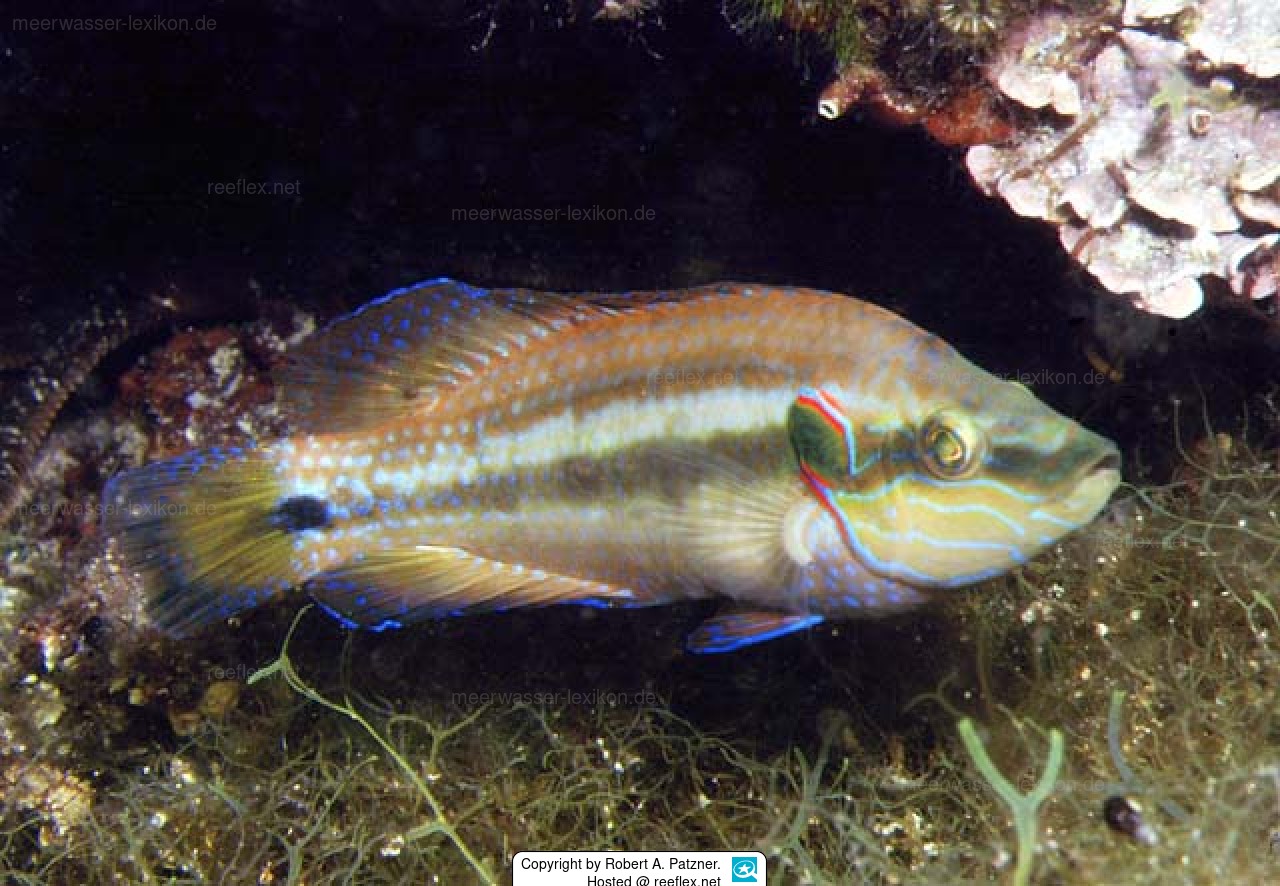Info
Distribution: Eastern Atlantic: throughout the Mediterranean, Black Sea and Sea of Azov.
Adults are found near rocks and eel-grass beds.
A nest of seaweed built and kept by male.
Feed on bryozoans, hydroids, tubicolous, worms, shrimps, amphipods and mollusks.
Males grow faster than females.
Undergoes sex reversal.
Oviparous, distinct pairing during breeding
Jumping guard
A jumping guard prevents (nocturnal) fish from jumping out.
Wrasses, blennies, hawkfishs and gobies jump out of an unprotected tank in fright if their night rest is disturbed, unfortunately these jumpers are found dried up in the morning on carpets, glass edges or later behind the tank.
https://www.korallenriff.de/en/article/1925_5_Jump_Protection_Solutions_for_Fish_in_the_Aquarium__5_Net_Covers.html
A small night light also helps, as it provides the fish with a means of orientation in the dark!
Adults are found near rocks and eel-grass beds.
A nest of seaweed built and kept by male.
Feed on bryozoans, hydroids, tubicolous, worms, shrimps, amphipods and mollusks.
Males grow faster than females.
Undergoes sex reversal.
Oviparous, distinct pairing during breeding
Jumping guard
A jumping guard prevents (nocturnal) fish from jumping out.
Wrasses, blennies, hawkfishs and gobies jump out of an unprotected tank in fright if their night rest is disturbed, unfortunately these jumpers are found dried up in the morning on carpets, glass edges or later behind the tank.
https://www.korallenriff.de/en/article/1925_5_Jump_Protection_Solutions_for_Fish_in_the_Aquarium__5_Net_Covers.html
A small night light also helps, as it provides the fish with a means of orientation in the dark!







 Dr. Robert A. Patzner, Österreich
Dr. Robert A. Patzner, Österreich
















